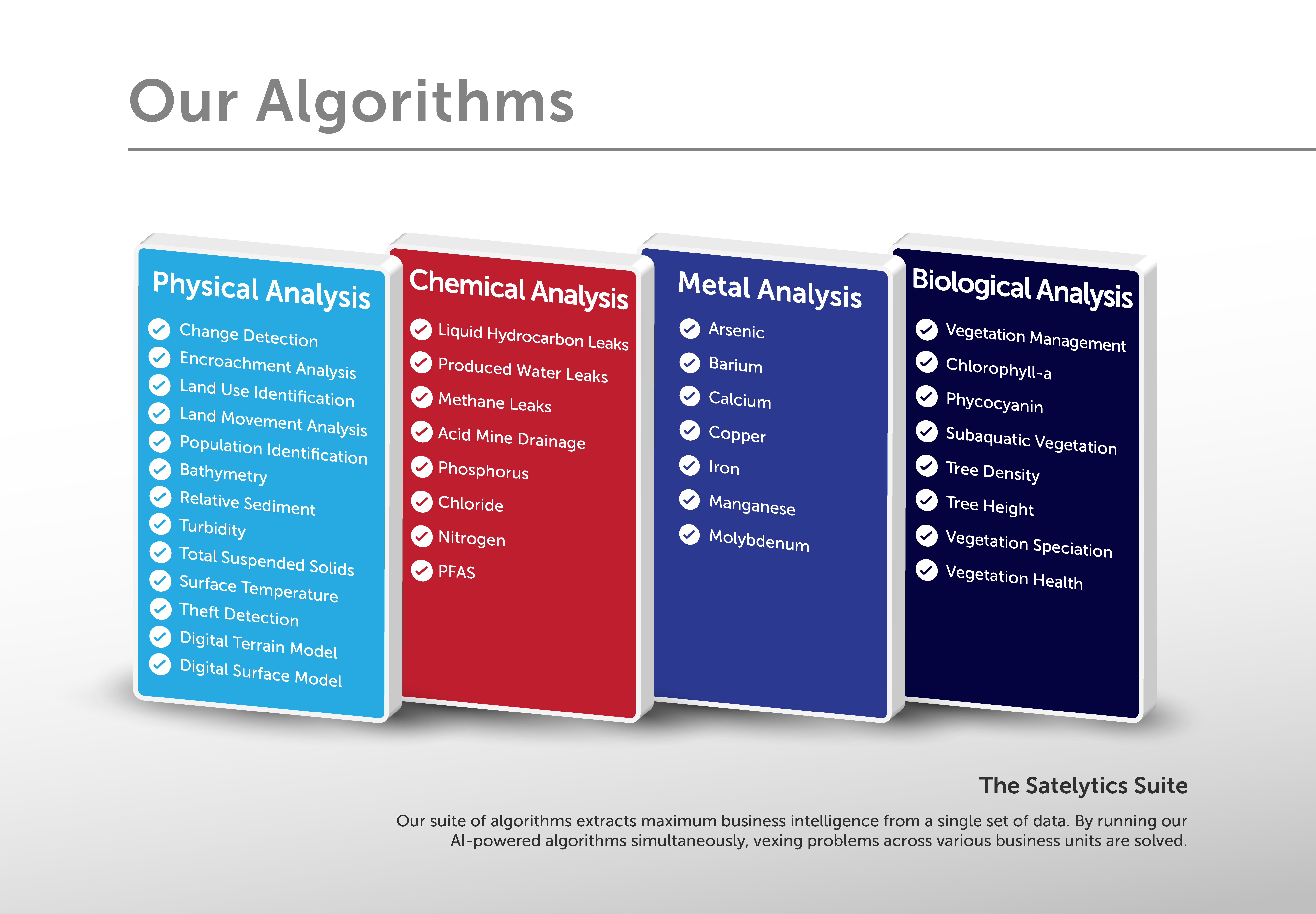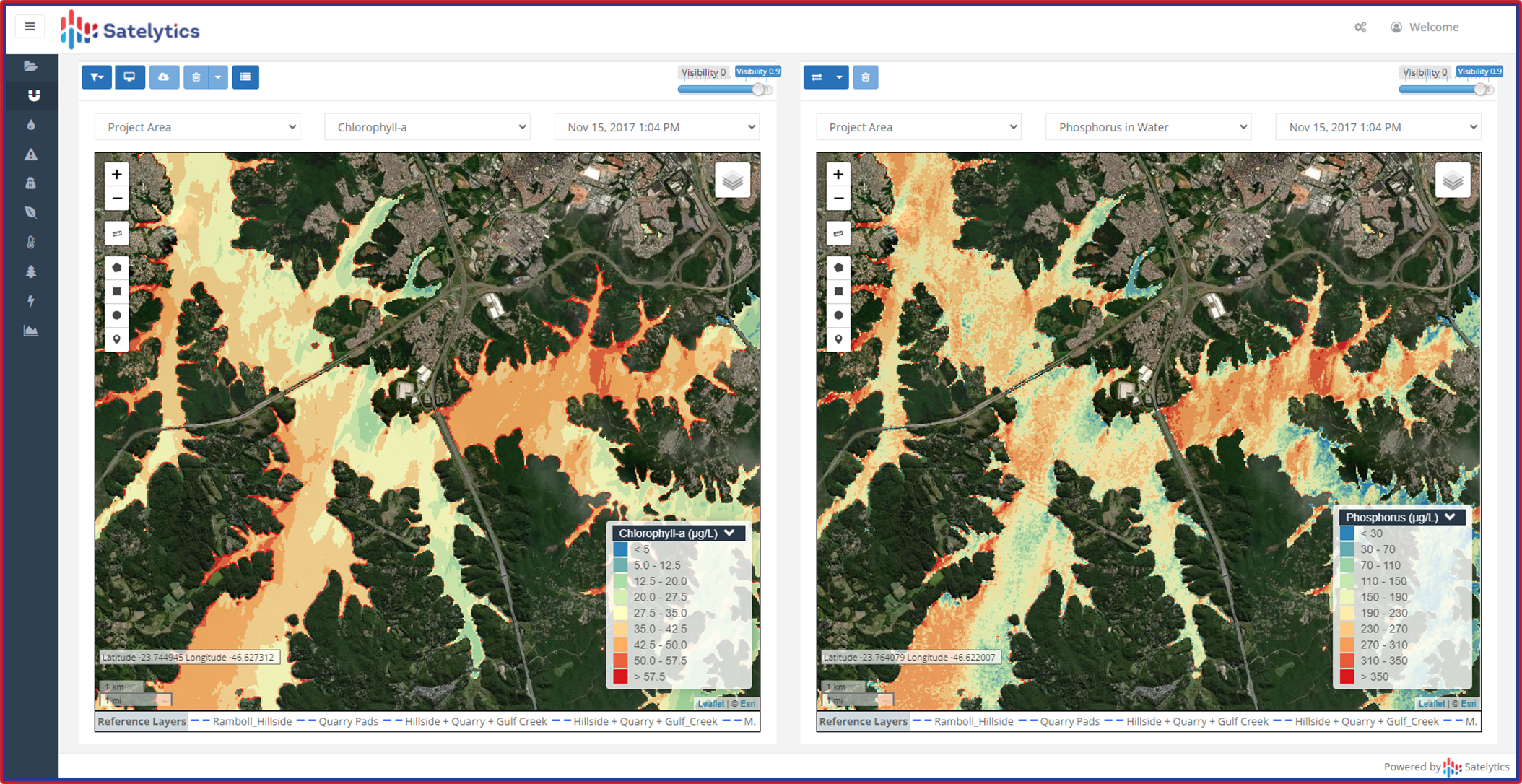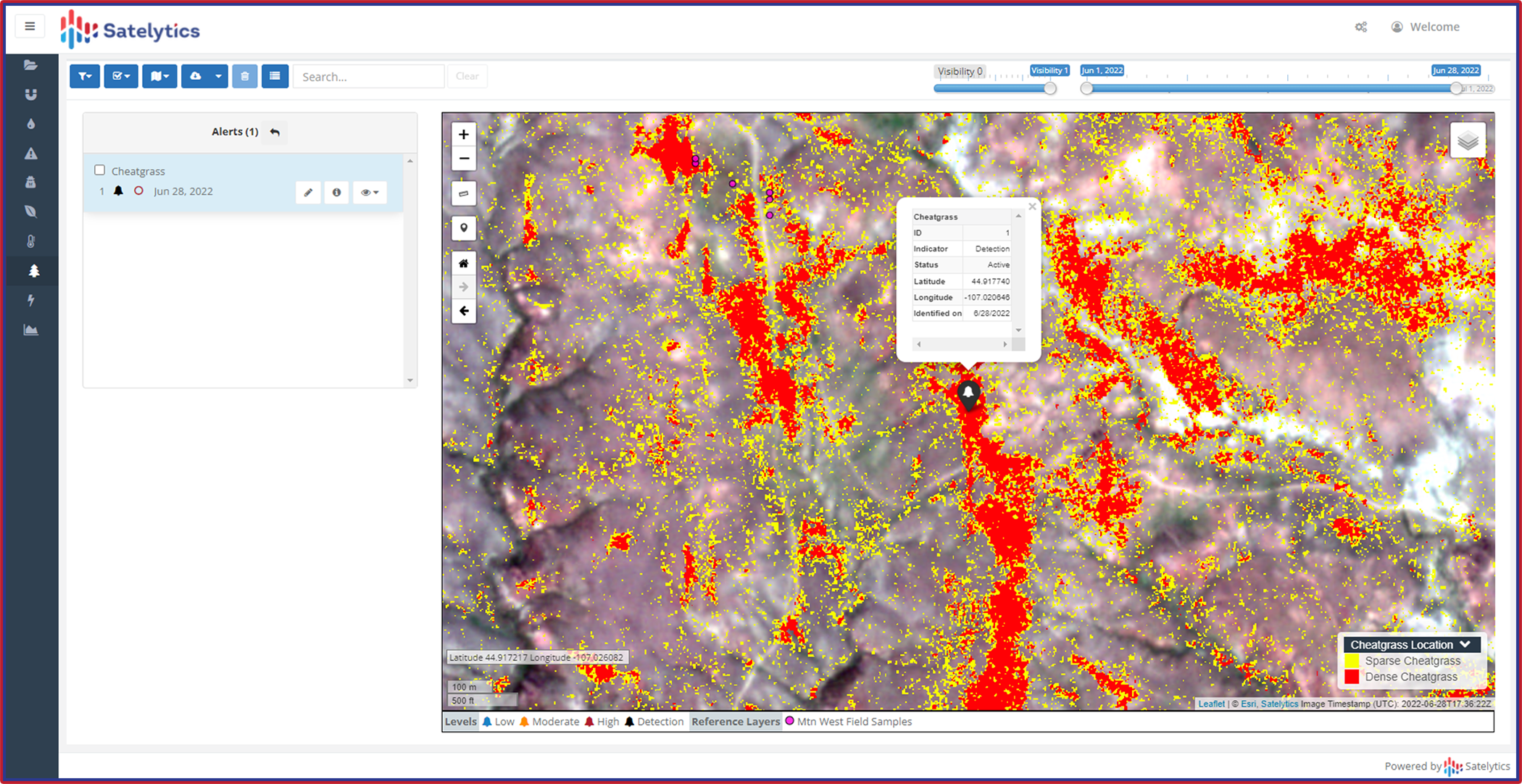
• General

• General
How many software systems are currently in place at your company? Is your response, “One too many?” This is why Satelytics seeks to be vertically integrated within our customers’ operations, environmental, engineering, and sustainability business groups. We provide alerts to threats facing large infrastructure areas from a single set of data, available to ten or a thousand users, for one cost. Satelytics’ goal is to make data easily accessible and actionable for our customers.
In the previous two articles of this series on the Satelytics vertical, we discussed the physical, chemical, and metal analyses available. Today the subject is our biological algorithms, which are currently benefiting a diverse group of industries.

Satelytics' many algorithms.
Biological Analyses

Detect and quantify indicators of possible harmful algal blooms.
We offer our electric utility and pipeline customers a full suite of vegetation management tools so managers can be proactive instead of reactive along their corridors and rights-of-way: tree speciation, height, health, density, and strike potential. For buried utilities and pipelines, we identify loss of cover and speciation of grasses — including invasive species. These vegetation management capabilities also apply to forestry.

Speciate vegetation and identify invasive species.
Physical, chemical, metal, biological: Satelytics’ algorithms are being used across our customers’ business verticals to get ahead of threats and prevent disasters. Call us today to see how they can go to work for you and your company.